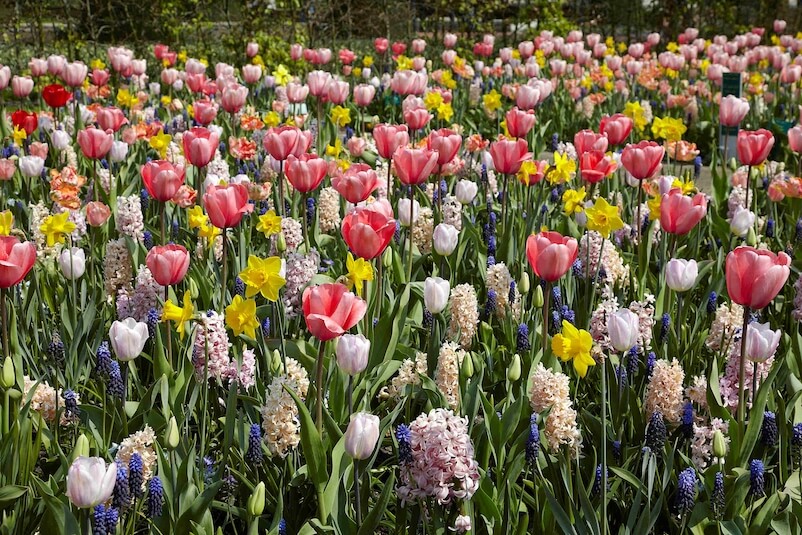If there were such a thing as a primer of fall bulbs, it would be a very thin book. Bulbs are almost foolproof – there is little you can do to prevent their natural flowering cycle. Plant them in the fall and they bloom in the spring, often popping up right through late winter snows.
The only caveat is this: buy your fall-planted bulbs from a reputable company that guarantees their product unconditionally. I chose years ago to rely on Breck’s Bulbs. The company has been around almost 200 years, has bulb experts in the fields in Holland inspecting the crops and choosing the very best bulbs for my garden.
And though I’ve never had a problem, I trust they would make it right if that time ever came.
That being said, there are just a few other things to check off the list when planting fall bulbs:
1. Choose a sunny location – the more sun they get, the better they bloom.
2. Make sure there is adequate drainage in the bed – fall bulbs don’t like “wet feet.”
3. Don’t plant the bulbs too deep – a good rule of thumb is to multiply the bulb’s height by three. (So a tulip bulb that is two inches high would be planted six inches deep.)
4. Most bulbs have one side that’s pointed –plant that end up. Of course, if you can’t tell, take your best guess. Even if you’re wrong, somehow the bulb knows its roots should grow down and its flower stem up – and it usually rights itself.
5. Keep the soil moist over the winter.
6. Try to contain your excitement.
When your bulbs bloom in spring, there will be a few other tasks – some taller flowers may need staking, foliage will need to be removed when it fades and withers, and after many seasons, the bulbs may need to be dug and divided – but maintenance is minimal.
All in all, fall-planted bulbs are great for the beginning gardener, giving you maximum garden impact for minimum maintenance – easy as A-B-C!



